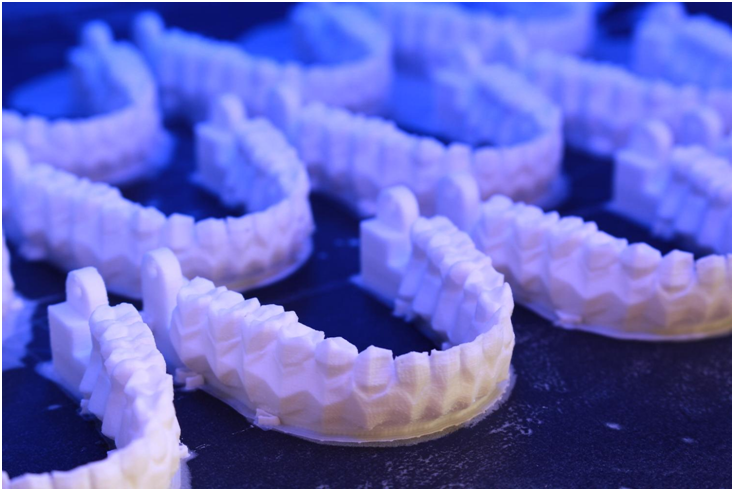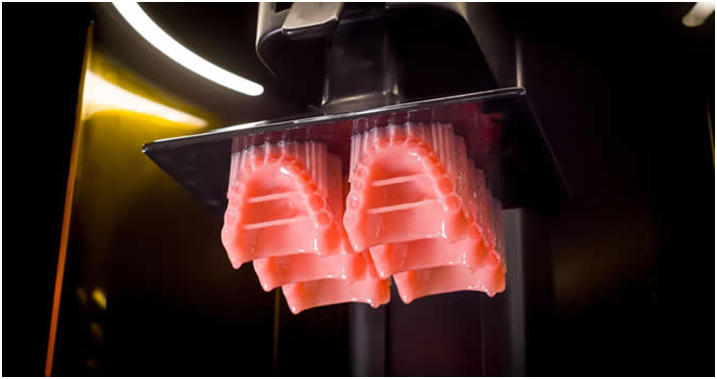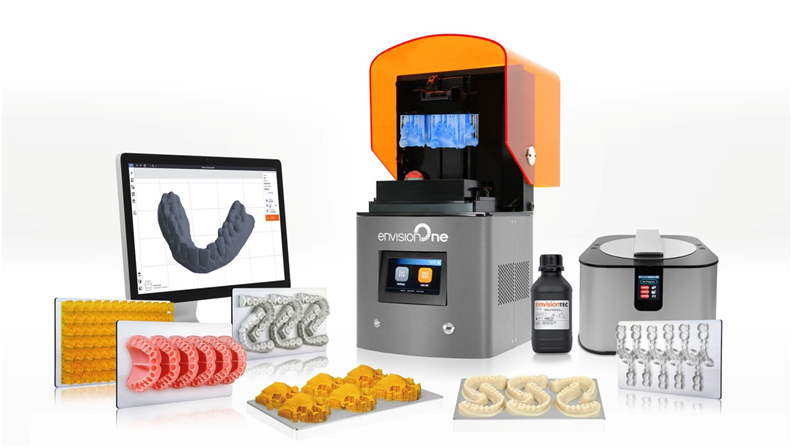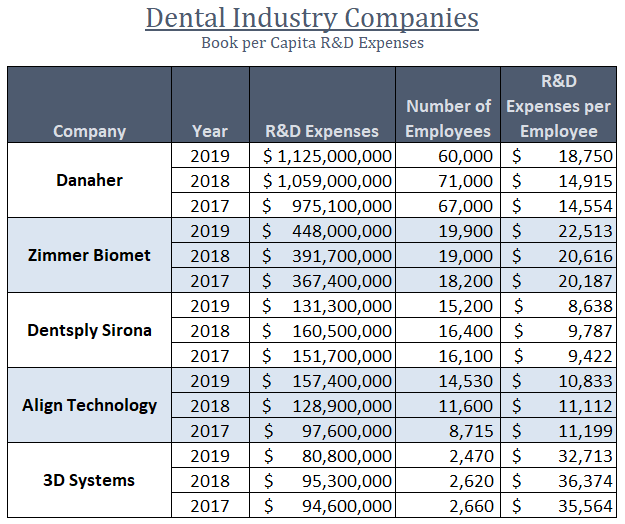
Charles R. Goulding considers the work in and implications of 3D printing in the dental industry.
3D Printing in Dentistry and Orthodontics
3D printing in the dental industry has grown rapidly with the use of innovative products and processes for patient care. This article will cover recent developments in the dental industry, highlighting three major companies in the industry. The three companies being covered are:
- Align Technology
- Dentsply Sirona/Byte Aligners
- Desktop Metal/EnvisionTEC
Align Technology
The growth of the clear aligner market is exponential as Align Technology, the company behind Invisalign, has surpassed a $30 billion market cap and made the 2020 Fortune Future 50 list. Align is positioned well to provide custom-fit clear aligners in mass as according to President and CEO Joe Hogan:
“The adult market is an incredibly underpenetrated demographic, we’re not just disrupting the current orthodontic market. We’re expanding orthodontics to the masses. We have the critical capacity to do broadly 90% of the world’s orthodontic cases.”
The adult market, in particular, is a unique demographic as more than 500 million adults seek to straighten their teeth without having metal wires or brackets.
Align has been experimenting with 3D printing dental and orthodontic products as they introduced new CAD/CAM software and an intraoral scanner known as the iTero. The combination of 3D printing and dentistry has allowed for the advancement and improvement of custom dental products.
The iTero system operates by taking intraoral scans and converting them into digital files which can be formed into molds made to fit the user. Align uses SLA 3D printers and polyurethane resins to manufacture their aligners which are far less painful and time-consuming than traditional metal wires and brackets. During the COVID-19 pandemic, Align also began utilizing their 3D printing technology to produce PPE such as face shields and medical swabs for COVID-19 testing kits.
Dentsply Sirona/Byte Aligners

In similar news, clear aligner manufacturer Byte Aligners was just recently acquired by Dentsply Sirona (XRAY), a dental equipment manufacturing company that is publicly traded on the New York Stock Exchange and valued at over $4 billion. The deal to acquire Byte was valued at $1 billion as a move to deliver clear aligners under the name SureSmile directly to consumer homes.
Dentsply Sirona announced the launch of a denture product line that is optimized for digital dentistry and 3D printing. The Lucitone Digital Print Denture is the result of a partnership between Dentsply Sirona and Crafted by Carbon to create the first digitally produced dentures. The innovative 3D printing formula uses a unique premium process that has allowed technicians to greatly reduce the time needed to fuse denture teeth, with the process taking less than twelve minutes. Lucitone Dentures are also produced in varying shades with a special 3D print resin that makes the product more real and resistant to breakage.
Desktop Metal/EnvisionTEC

Another recent newsworthy acquisition in the industry was Desktop Metal’s purchase of EnvisionTEC for $300 million. Desktop Metal aims to target EnvisionTEC’s expansive dental segment as EnvisionTEC is a leader in the market with over 1,000 dental customers including the Smile Direct Club.
EnvisionTEC will bring aboard a wide spectrum of dental products that include, digital dentures, bonding trays, gingival trays, bite splints, ortho models, impression trays, and much more that’ll create a unique portfolio of rapid production dental products within the acquisition.
Within the dental market, companies spend extensive amounts of time and money on Research and Development (R&D). A summary of R&D spending in the market is shown below:
Companies in the dental industry leveraging 3D printing technology may qualify for R&D tax credits.

The Research & Development Tax Credit
Whether it’s used for creating and testing prototypes or for final production, 3D printing is a great indicator that R&D Credit eligible activities are taking place. Companies implementing this technology at any point should consider taking advantage of R&D Tax Credits.
Enacted in 1981, the now permanent Federal Research and Development (R&D) Tax Credit allows a credit that typically ranges from 4%-7% of eligible spending for new and improved products and processes. Qualified research must meet the following four criteria:
- Must be technological in nature
- Must be a component of the taxpayer’s business
- Must represent R&D in the experimental sense and generally includes all such costs related to the development or improvement of a product or process
- Must eliminate uncertainty through a process of experimentation that considers one or more alternatives
Eligible costs include US employee wages, cost of supplies consumed in the R&D process, cost of pre-production testing, US contract research expenses, and certain costs associated with developing a patent.
On December 18, 2015, President Obama signed the PATH Act, making the R&D Tax Credit permanent. Since 2016, the R&D credit has been used to offset Alternative Minimum Tax (AMT) for companies with revenue below $50MM and, startup businesses can obtain up to $250,000 per year in payroll tax cash rebates.
Conclusion
The dental industry is well poised for using 3D printing to create personalized dental products and improve the overall process. The ability to custom tailor dental products on such a large scale gives consumers an unfamiliar level of comfort when considering products such as aligners. Less pain, less time and less money spent on general dentistry and orthodontics is both exciting and rapidly approaching for consumers.
